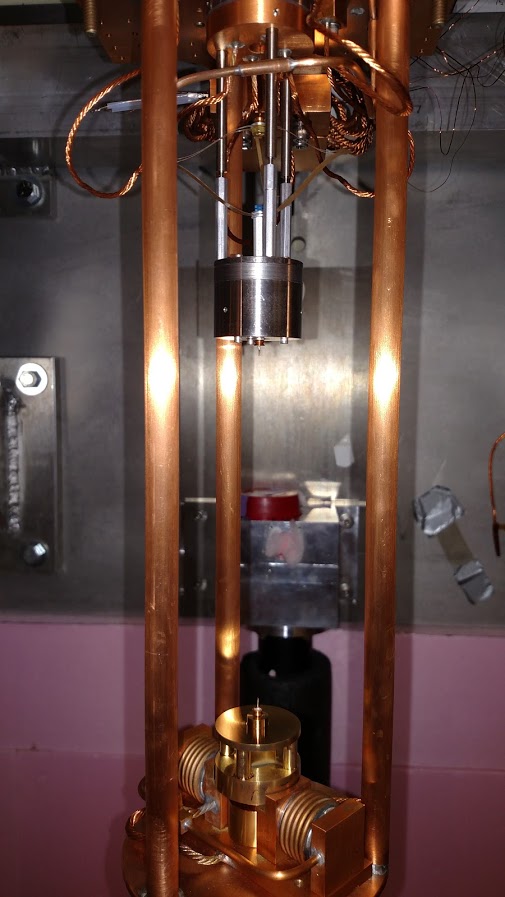Since the late 18th century when Cavendish performed his measurements of the force of gravity, torsion balances have been apparatus of choice for precision measurements of the force between two test bodies. Our group specializes in applying torsion balances to measure the gravitational constant (“Big G”), the inverse square law of gravity, and the equivalence principle with the aim of searching for exotic interactions that would cause deviations from the predictions of General Relativity. These experiments have allowed us to constrain a wide range of theories from string theory to dark matter.
A torsion balance consists of a pendulum hung from a thin fiber. This forms a low frequency spring mass system in the torsional degree of freedom. The angle of the pendulum is recorded via an optical readout allowing one to precisely measure the interactions of the pendulum with an external mass be it a rotating attractor, the hillside near our lab, the sun, or the center of the galaxy.
With my fellow group members, I’ve developed technologies aimed at improving the performance of these experiments. First off, we’ve constructed a cryogenic torsion balance (shown below) that operates at liquid helium temperatures (~5 K). Many torsion balances are limited by the so called thermal noise which is sourced by the thermal vibration of the atoms that make up the torsion fiber. Decreasing the temperature decreases these vibrations thus decreasing the noise in the instrument. Additionally, operating a torsion balance at cryogenic temperatures allows for some unique experiments including those using superconductors as test masses or using superconducting shields to remove spurious magnetic fields.

We have also developed the interferometric readout torsion balance shown below. The angle of the pendulum in most experiments is measured by an autocollimator which consists of bouncing light of a mirror attached to the pendulum and measuring the displacement of the return beam on a position sensitive sensor. However, an interferometric readout can be significantly more sensitive. To achieve this we built a modified Michelson interferometer which uses the two ends of the torsion balance as the two arms of a Michelson. This allows us to measure angular displacements down to ~10 prad. Due to the extreme sensitivity and unique pendulum shape, this apparatus can be applied to study a number of different phenomenon including the gravitational interaction of the atmosphere and the pendulum (so called Newtonian noise), technology development for low frequency gravitational wave detectors, and rotational seismology.

Related Publications:
“A Cryogenic Torsion Balance Using a Liquid-Cryogen Free, Ultra-Low Vibration Cryostat“, S. M. Fleischer, M. P. Ross, K. Venkateswara, C. A. Hagedorn, E. A. Shaw, E. Swanson, B. R.Heckel, J. H. Gundlach. Review of Scientific Instruments (2022)
“A Low-Frequency Torsion Pendulum with Interferometric Readout“. M.P. Ross, K. Venkateswara, C.A. Hagedorn, C.J. Leupold, P.W.F. Forsyth, J.D. Wegner, E.A. Shaw, J.G. Lee, E.G. Adelberger, J. H. Gundlach. (2021)